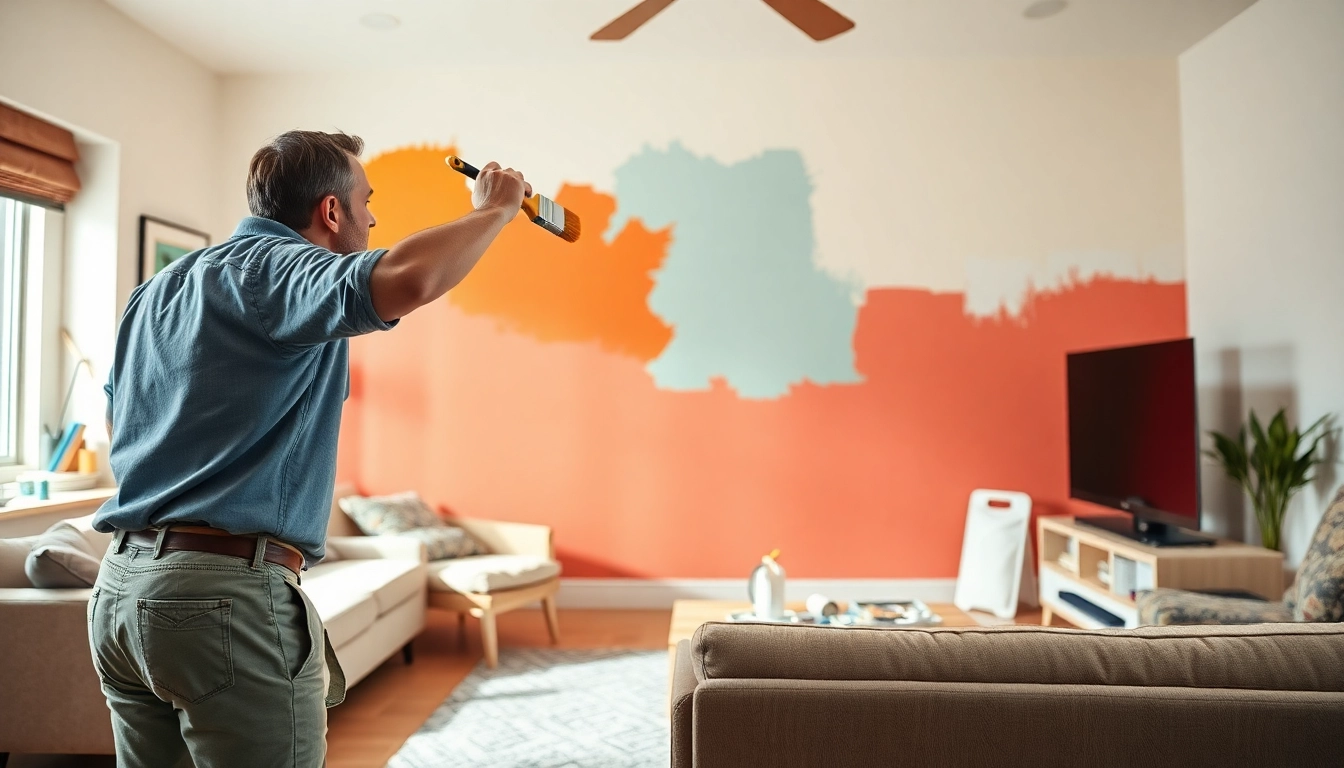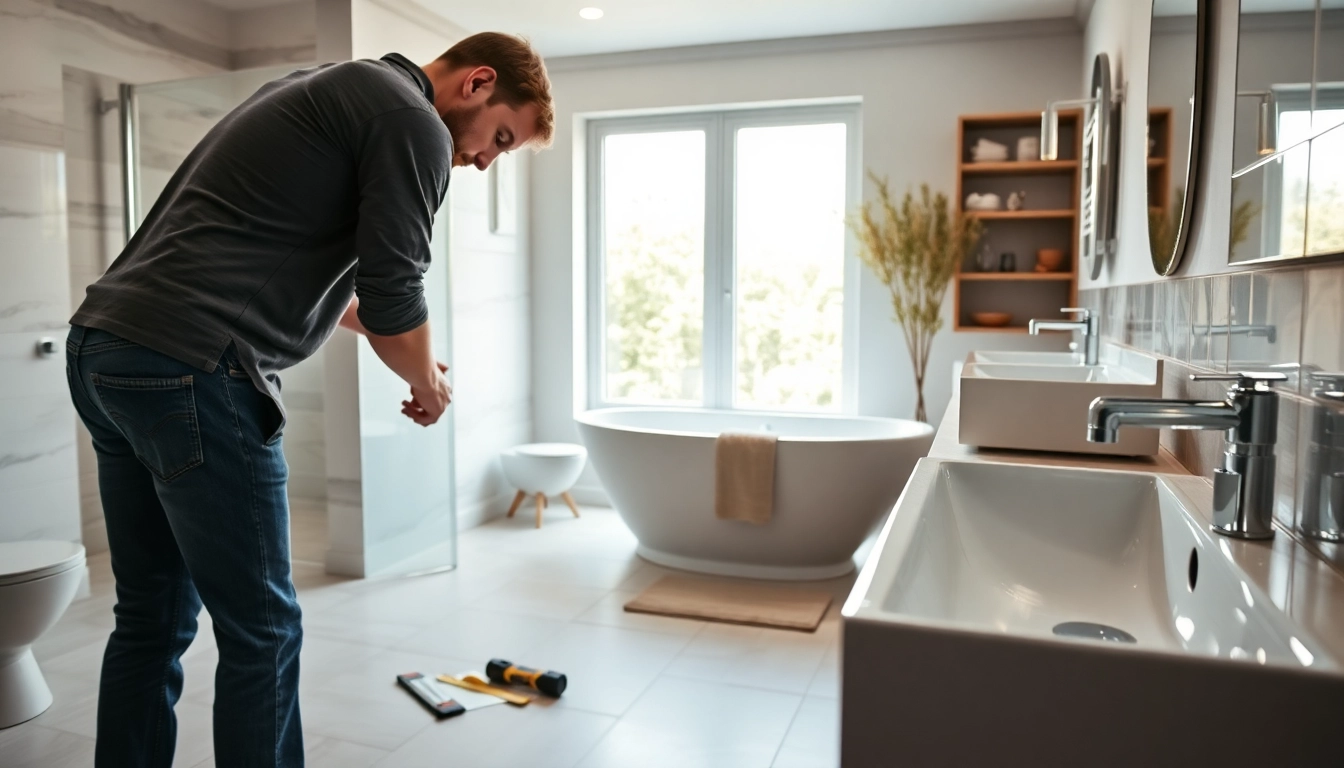
Understanding Interior Painting: A Beginner’s Guide
What is Interior Painting?
Interior painting involves applying paint to the walls, ceilings, trim, and other surfaces within the confines of a building or home. Unlike exterior painting, which must withstand harsh weather conditions, interior painting offers a range of possibilities for personal expression, whether you’re looking to create a serene retreat, an energetic space, or a balanced combination of both. Many homeowners take on interior painting as a DIY project, while others opt for hiring professional painters to ensure a polished finish.
Benefits of Interior Painting
Choosing to repaint your interiors provides a multitude of benefits:
- Enhanced Aesthetic Appeal: Fresh paint can dramatically transform the appearance of your space, making it more welcoming and visually appealing.
- Increased Property Value: A well-executed paint job can increase the overall value of your property, making it more attractive to potential buyers.
- Improved Mood and Well-Being: Colors affect mood. A well-chosen color palette can make spaces feel more vibrant or tranquil, altering how inhabitants feel in their environment.
- Protection for Walls: Paint acts as a protective layer for walls, preventing damage from moisture, stains, and minor impacts.
Choosing the Right Paint Types
When selecting paint for interior applications, there are a few key considerations:
- Paint Finish: Common finishes include matte, eggshell, satin, semi-gloss, and high-gloss. Each finish offers different levels of durability and ease of cleaning.
- Paint Base: Options include water-based (latex) and oil-based paints. Latex paints are easier to clean and typically have less odor, while oil-based paints offer a smoother finish and better durability for certain applications.
- Eco-Friendly Options: If sustainability is a concern, look for low-VOC (volatile organic compounds) or zero-VOC paints that are less harmful to indoor air quality.
Planning Your Interior Painting Project
Assessing Your Space
Before embarking on an interior painting project, it’s vital to assess your space thoroughly:
- Consider Room Size: Larger rooms may require more paint and take longer to complete. Measure the dimensions to calculate the appropriate amount of paint.
- Evaluate Lighting: Natural and artificial lighting can affect how colors appear. Test paint samples in different lights before making a final decision.
- Identify Existing Issues: Look for any damage such as cracks or stains that may need to be addressed before painting.
Color Selection Tips for Interior Spaces
Choosing colors for interior spaces can be daunting. Here are some effective strategies:
- Create a Cohesive Look: Use a color scheme that flows from room to room, particularly in open floor plans.
- Use Color Theory: Understand how colors influence emotions and behavior. For example, blue promotes calmness, while yellow can invigorate.
- Test Samples: Purchase small sample pots to paint swatches on your walls and observe how they change in different lighting throughout the day.
Gathering Necessary Tools and Supplies
Interior painting involves several tools and supplies for a successful outcome.
Make a checklist that includes:
- Paintbrushes and rollers
- Drop cloths to protect floors and furniture
- Painter’s tape for clean lines
- Paint trays and liners
- Sandpaper and spackle for wall preparation
- Protective gear like goggles and masks
Executing the Interior Painting Process
Preparing the Room for Painting
Preparation is vital to achieving professional results in interior painting:
- Clear the Room: Move furniture out or to the center of the room, covering it with drop cloths.
- Repair Walls: Fill holes and sand rough surfaces. Allow the spackle to dry completely.
- Clean Surfaces: Dust and clean the walls to ensure proper adhesion of the new coat of paint.
- Tape Off Areas: Use painter’s tape to mask off edges, trim, and areas that you don’t want to paint.
Painting Techniques: Brush vs. Roller
There are two primary techniques for applying paint:
- Brushing: Best for detail work and edges, a quality brush will allow for precision when painting corners and trim. It’s essential to use the right type of brush for the paint finish.
- Rolling: Ideal for large, flat surfaces, rollers cover areas quickly and evenly. While they are efficient, proper technique is vital to avoid texture issues and drips.
Applying Finishing Touches: Trims and Touch-Ups
Once the main painting work is completed, pay attention to the details:
- Remove Tape Carefully: Once the paint is dry, carefully remove the painter’s tape at a 45-degree angle to avoid peeling paint.
- Touch-Up Areas: Identify any areas that may need a second coat or additional touch-ups to ensure a uniform look.
- Install Fixtures: Reattach fixtures like outlet covers and switch plates once the paint is fully dry.
Common Interior Painting Mistakes to Avoid
Skipping the Preparation Steps
Rushing past the preparation phase often leads to unsatisfactory results. Solid preparation is the foundation of a quality paint job.
Choosing the Wrong Paint Finish
Using the appropriate finish for the specific room is crucial. A glossy finish may not be ideal in high-moisture areas, while matte finishes can be challenging to clean.
Neglecting to Use Primer
Primer plays a vital role in how the final coat of paint appears. It improves adhesion and reduces the number of paint coats needed, helping you achieve vibrant colors.
Hiring Professionals vs. DIY Interior Painting
When to Hire a Professional Painter?
While many homeowners may feel confident in their painting skills, certain situations strongly warrant hiring professionals:
- Large Spaces: If the area to be painted is large or involves intricate details, a professional service can save you a considerable amount of time.
- Height Concerns: Tall walls or ceilings may require ladders or scaffolding, making it safer to leave it to the pros.
- Expertise Required: Professionals offer insight into color selection, paint type, and execution that can significantly enhance the end result.
Estimating Costs for Interior Painting
Understanding the costs associated with interior painting can help you budget effectively. Charges may include:
- Labor Costs: Professionals typically charge by the hour or per square foot.
- Material Costs: The type and quantity of paint, primer, and supplies needed can vary based on your project.
- Additional Fees: There might be additional costs for specific services like repair work or specialty finishes.
Based on your local area, the average cost for painting an interior room can range significantly from $400 to $1,800, influenced by size and complexity.
The Value of Expert Advice on Interior Painting Projects
Consulting with experienced painters can provide valuable insights that can streamline your project, save money, and enhance the overall result. Their expertise can help identify potential pitfalls and ensure your project runs smoothly from inception to completion.






